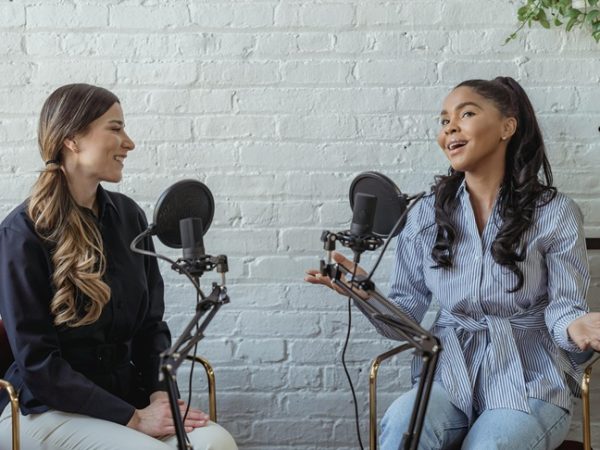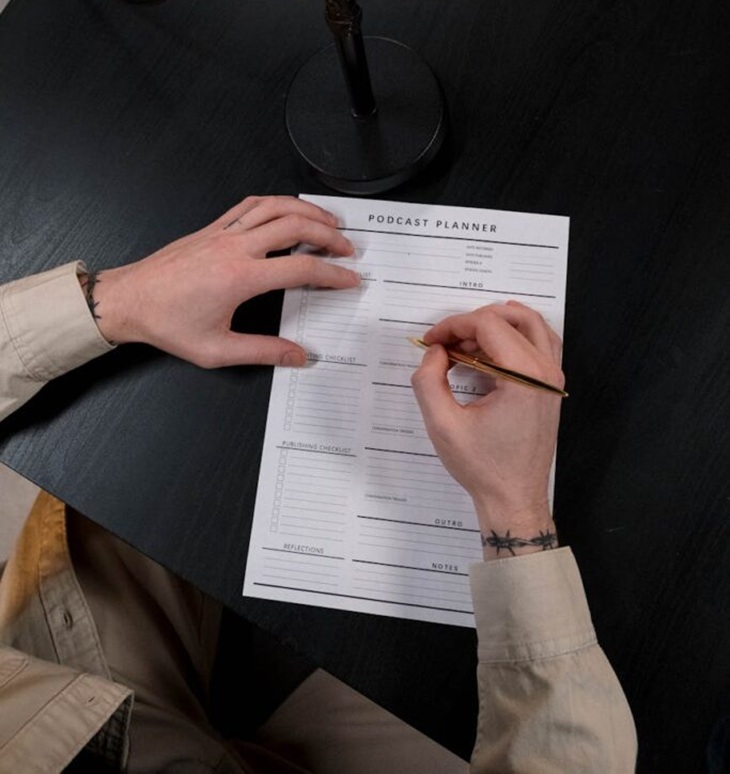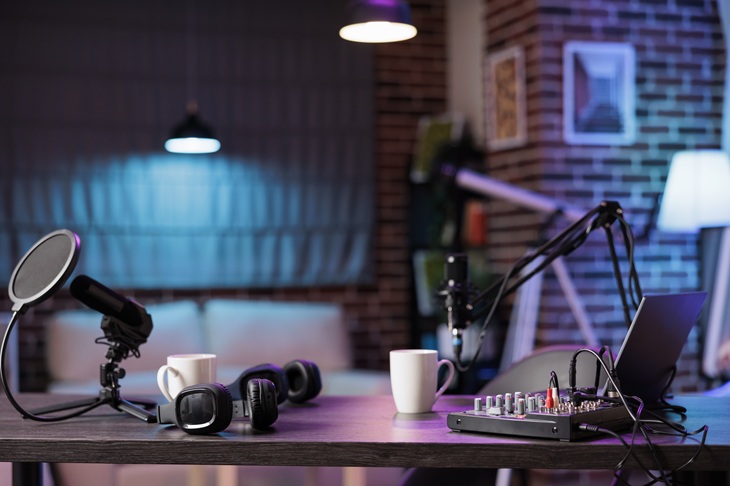04
Feb

Podcasts are growing in popularity these days, and for good reason. They offer a great opportunity to share ideas, opinions, and conversations that others can relate to or learn from. If this medium seems interesting to you and you want to give it a go, congrats on your big decision!
While it might initially seem intimidating, starting a podcast doesn’t require extensive technical knowledge or a lot of money. It’s fairly simple, especially when you have an easy-to-follow guide. Here are some tips to help you launch your very own podcast:

Developing a concept for a podcast means creating a clear and cohesive idea that defines what the podcast is about, who it’s for, and how it will stand out. The key is to choose a topic based on your interests and goals. Find something you’re genuinely interested in. This will motivate you to prepare for each episode and give you enough material for years.
The next step is to choose a format. Whether you go with interviews, solo monologues, co-host discussions or documentaries, pick something that suits your topic and style.
You should also determine your target audience. A good podcast needs listeners who will keep coming back. That said, think about who you want to reach. Are they professionals, students, hobbyists, or fans of a specific genre? Knowing your audience influences how you structure your content and what topics you explore.
Don’t forget to develop a unique angle that sets you apart. Consider what makes your podcast stand out from others in the same niche and how to offer something fresh.
After you have your theme and topic sorted, the next step is to pick the right recording equipment. A solid setup ensures that your voice is clear and professional, helping to keep your audience coming back for more.
Your microphone is the most important piece of equipment. It’s the foundation of your audio quality and can make all the difference in how your podcast sounds. Clear, crisp audio is key to keeping your audience engaged, so it’s worth investing in a good one.
The many choices of recording microphones can be overwhelming, especially if you have little experience, but here’s a tip: a reliable and responsive cordless mic is your best bet. This type of mic consists of the microphone itself, a transmitter, and a receiver. The transmitter sends the audio from the mic to the receiver, which connects to your recording device.
The best part? No wires! You can move around while recording without worrying about cables getting tangled or limited by length. Whether you like to pace around or adjust your position while recording, you’ll enjoy seamless audio capture and the convenience of cable-free performance. Plus, a wireless mic is easier to set up, meaning you can focus more on your content instead of dealing with tangled wires.
When picking a wireless microphone, consider battery life, wireless range, and sound quality. You want a mic that won’t cut out halfway through, so look for one with a long battery life. A strong wireless range is important to avoid interruptions, and a mic with low latency will keep your audio synced properly.
Look for a microphone with noise-cancelling features. If you’re recording in a less-than-ideal space with background noise, this feature will help isolate your voice and keep it clear.
And, of course, don’t forget about headphones. You’ll need a good pair to monitor your audio while recording and editing. They’ll help you spot any issues before they become a problem, so you can keep your podcast sounding its best.
Once you’ve sorted out your hardware, you’ll need recording software to bring your podcast to life. Look for user-friendly options that match your needs. Free tools like Audacity are great for beginners, while paid options often offer extra features for cleaner audio and effects.
Make sure the software works well with your equipment and lets you record in high quality. It’s also worth checking for features like noise reduction and multi-track editing. Spend a bit of time learning the basics, as good software can make your podcast sound professional.

Setting everything up is key to recording a great podcast. Choose a comfortable spot with minimal distractions and enough space for your equipment. It’s also a plus if you can find a quiet room where you won’t be interrupted.
Pay attention to acoustics—rooms with too much echo or background noise can affect your sound quality. Soft furnishings, like cushions or curtains, can help absorb sound and improve acoustics.
Once your space is ready, set up your microphone, headphones, and recording software. Don’t forget to do a test recording to ensure everything works well before diving into your episodes.
Recording and editing are where your podcast comes to life. Hit record when you’re ready, but make sure to speak clearly and at a steady pace. Don’t worry if you make a mistake—you can always fix it later.
After recording, jump into editing. Trim out long pauses, mistakes, or any unwanted noise. You can also add music or sound effects to make things more interesting.
Most editing software lets you adjust volume levels, so everything sounds balanced. Keep it simple and focus on making your podcast clear and easy to follow. Don’t worry if it takes you more than one try to get it right. As you gain experience, you’ll become much better at it.
Once your episode is ready, upload it to a podcast-hosting platform. Make sure your title and description are catchy so people know what to expect. After that, share your episode on social media to get the word out.
You can also ask friends or followers to help spread the word. Consider reaching out to other podcasters or bloggers for cross-promotion. The more you share, the more likely your podcast will find its audience. Consistency is key, so keep pushing new episodes and promoting them regularly.